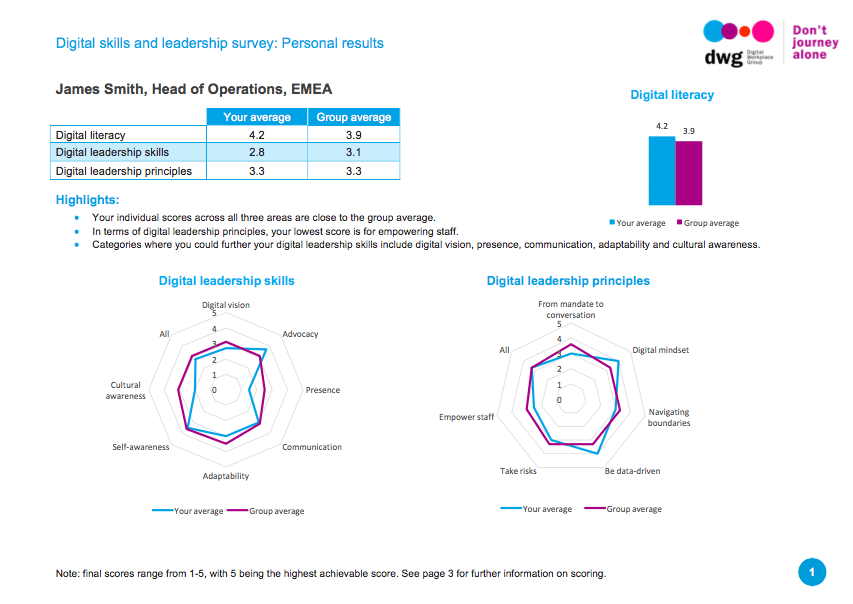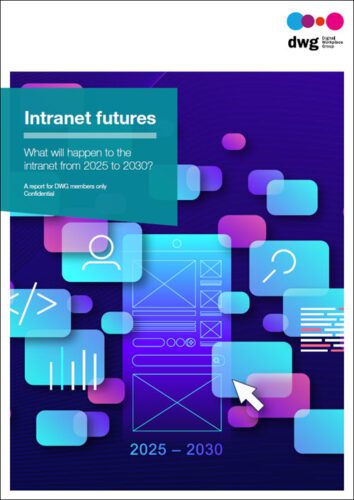What does a ‘Minimum Viable Digital Leader’ look like in your organization?
Companies that get digital leadership right are 38% more likely to report strong revenue and profit growth, and 24% more likely to have satisfied employees.1 However, most companies lack digital capability in the boardroom and many employees think their leaders lack sufficient skills.2
DWG research has identified a set of skills and principles that leaders need in order to lead effectively in the digital workplace:

We can understand what these skills and principles look like in action when we think of leaders like Unilever’s CEO Paul Polman, who engages staff in social media chats on the intranet, or Ford’s CIO Marcy Klevorn, who sends “Just a minute” videos recorded on her iPhone to her 11,000 staff.
But for leaders at the start of the digital journey, reaching such heady heights can seem hard to achieve. Barriers such as poor digital literacy, fear of making a mistake, perceptions of the time involved and worries about style (etc.) can all hold leaders back from going digital before they’ve even started.
Communicators and advisers helping leaders to “get” digital need to think about the steps that will help them reach that point. First is understanding where digital leaders are at right now, something we look at in DWG’s digital leadership in-depth assessment, which includes the following high-level overview:

Gaining clarity on digital leadership capabilities in this way means that leaders and the communications team can understand what current practices look like and where leaders are struggling. It can also help identify examples of good practice that can be used to encourage (and nudge) others along.
The output of the assessment can drive the development of resources and programmes to build the digital leadership capability within the organization; for example, specific guidance on which channels to use when, and initiatives such as reverse mentoring and leadership workshops.
But even with the best of intentions, moving from those intentions to actions can be hard. We all recognize this familiar pattern when the fervour of New Year’s resolutions wears off. It’s something psychologists have a lot to say about and several highly successful theories can help us understand how to bridge the gap. Implementation intentions are “if… then” statements that make our well-meant intentions more definite. For example: “I want to be a great digital leader, so I will post on our collaboration platform once a week.”
In a recent Knowledge Exchange, we were shown a great example of how to help leaders move from intention to action in digital leadership from a DWG member, who explained their set of “minimum requirements” that enable their leaders to become more active and visible on their digital workplace platform.
This got me thinking about the idea of the Minimum Viable Product (MVP) and how we might apply it in this area (with a little imagination). The idea behind MVP is to develop just enough features in a new product so that early adopters can try it out and provide feedback for further development.
Recognizing that digitizing your leadership is going to be a journey, how about thinking about what the Minimum Viable Digital Leader (MVDL) would look like in your organization? This can involve defining a specification for MVDL with very definite actions/expectations; for example, following the company on external social networks and posting weekly on the collaboration platform.
Monitoring progress against the MVDL spec will help identify who’s progressing and where further help is needed. Leaders fulfilling the spec will start to see the value of their participation. It will also give their followers a chance to feel the benefit, provide feedback, and hopefully clamour for more! As leaders progress, you could even have an advanced or extended set of goals ready to help them move from “minimum” to “mastery”.
Footnotes
1. Oxford Economics 2016.
2. Russell Reynolds, 2014.
Research and Resources
- What is the “Digital IQ” of your leaders?
- Three great Paul Miller recordings on digital leadership
- Why digital workplace transformation starts with digital leadership
Take the next step
Arrange a call to learn more
Categorised in: Digital workplace, Digital workplace strategy, Research reports


